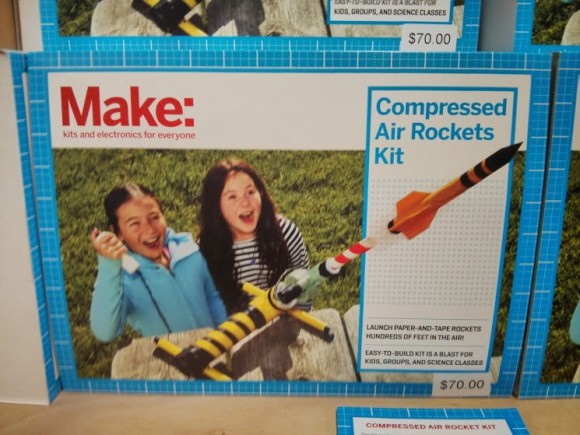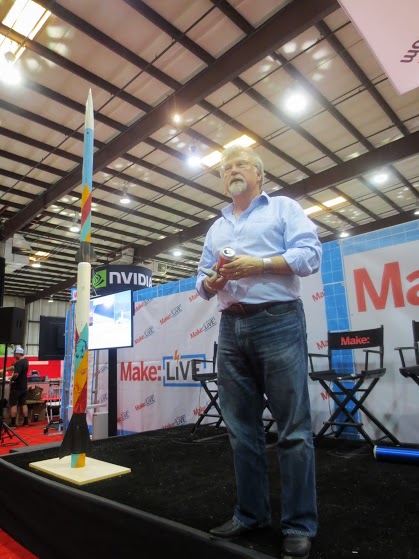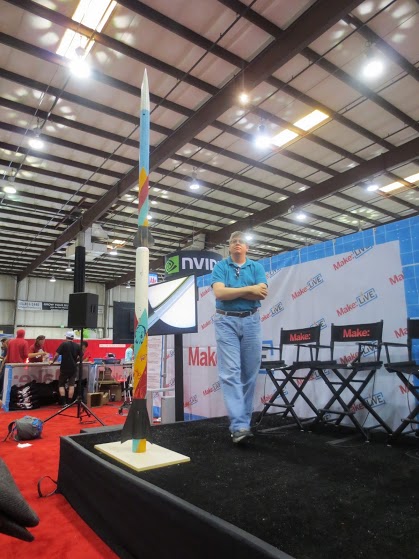aNewDomain.net — They were chasing the Carmack Prize. John C. Carmack offered $5,000 US to anyone who’d build the first amateur rocket capable of making it to 100,000 feet altitude and back. And it had to remain intact on return. This story is about the team that won the big prize — the team known unofficially as AeroPac — and the technology the team used to do it.
ED: This article now includes a YouTube video that winning rocketeer Casey Barker recommended to me. Check it out below the fold. And click here to learn more about previous AeroPac projects.
The winning AeroPac team of rocketeers included Casey Barker, plus Ken Biba, Erik Ebert, Becky Green, Jim Green, David Raimondi, Tom Rouse and Steve Wigfield. On September 11, 2012, the team headed to the Nevada Black Rock Desert and launched its rocket to 104,000 plus feet and fully recovered the launch vehicle after its descent. It won the prize.
It was a pivotal moment in rocketeering history, amateur or otherwise. Scroll below for some amazing videos from the winning team members. How did the team do it? For starters, designers went well beyond assembling a mere compressed air rocket kit, like the one you see below.

Image credits: Richard Hay for aNewDomain.net
Instead, the team built an advanced two-stage rocket vehicle. Its reusable air frame was capable of carrying experiments the size of a Coke can.


Image credit: Richard Hay for aNewDomain.net
The team used a two-stage solid rocket fuel design. Two stock commercially available N and M-sized containers from aerotech-rocketry.com held the ammonium perchlorate propellant the design required. The team utilized in-flight telemetry tech and an in-flight computer. And it used computer simulations to precisely tweak the right ratio of fuel to placement.
It wasn’t all smooth sailing.
Just getting the rocket to its launch site was a challenge, Casey told me. Because postal rules prohibit shipment of solid fuel as a single unit, the team had to hacksaw the rocket into segments. The rocketeers reassembled it with epoxy before inserting it into the motor. That added some risk to the enterprise.
On its initial flight, the rocket lost a rail guide and listed by 25 degrees. But the rocket still hit 104,000 feet — that won it the prize.
And the team didn’t stop there. Ken estimated the rocket would have hit 120,000 to 140,000 feet had it not lost the rail guide on that initial launch. So the team ran several additional flights hoping to improve on that first launch performance. Yet subsequent launches had issues with stage two separation and further attempts never achieved the height of the first flight.
Two team members — Ken and Casey — did a short 30-minute presentation on the successful launch. It looks as if someday a small amateur rocket might become a vehicle for putting small satellites in orbit. The whole journey reminds me of the movie “October Sky,” the film about the Rocket Boys from West Virginia who dreamed that they might build rockets. NASA called and their dreams came true.
These days budgets are tight. But an amateur team was able to do this amazing thing. It reached 100,000 feet with an amateur rocket at a hundredth of what 1950s government-sponsored rockets would have cost.

Image credit: Richard Hay for aNewDomain.net
The team didn’t do it all alone, of course. It had the help of AeroPac and lunar.org to assist in the flight plans, plus it gained Federal Aviation Administration (FAA) approval, insurance and other necessities the prize and the government required to legally attempt to execute a project this huge.
There will be a lot more to say about citizen rocketry in the months ahead, that much is certain. As for this team, it certainly has written its place in history. Like SpaceX or other commercial space ventures, its accomplishment stands as a remarkable achievement and bodes well for the ability for much cheaper access to space for all of us.
Check out this video, posted in February 2013.
Video::PureVideoTV YouTube Channel
One thing to note: Commercial GPS loses the ability to track if the object exceeds Mach 1. In this flight the second stage of the rocket was traveling at Mach 3 at the apex, so there are gaps in the GPS tracking data when the rocket was traveling too rapidly.
Here are videos from several of the winning team members. NARCON 2013 posted the following:
John Beans – http://www.youtube.com/watch?v=1OgUF-Ky-Os
Chuck Piper – http://www.youtube.com/watch?v=7KI67NTGOos
Will Marchant – http://www.youtube.com/watch?v=ACCkFI0jwQ0
Gene Engelgau – http://www.youtube.com/watch?v=idcUGlXo-AM
Casey Barker, Ken Biba, Dave Raimondi (100K) – http://www.youtube.com/watch?v=2f6yomcfi1g
Bill Colburn – http://www.youtube.com/watch?v=M3m_LwKMrpY
Tony Cooper – http://www.youtube.com/watch?v=44x9cVO5XWs
Patrick McCarthy – http://www.youtube.com/watch?v=H0uNwy7mp60
Trip Barber – http://www.youtube.com/watch?v=ky_N6ndMqjk
Ken Biba, Lynn Cominsky, Dave Raimondi (ARLISS) – http://www.youtube.com/watch?v=eAfH1QC7VFQ
Nike tour (in 3 parts):
-
-
-
Richard Hay is senior science editor at aNewDomain.net. He’s also a staff engineer in network testing at Google. Email him and let him know the sort of stuff you’d like him to cover here on aNewDomain.net. He’s Richard@aNewDomain.net and +Richard Hay on Google+













I should probably type “First!” here, but wow, what a great story and amazing video. Thanks!
[…] Richard Hay: On Winning the Carmack Prize, How AeroPac Did It, Details by Richard Hay […]
Truly excellent +Richard Hay